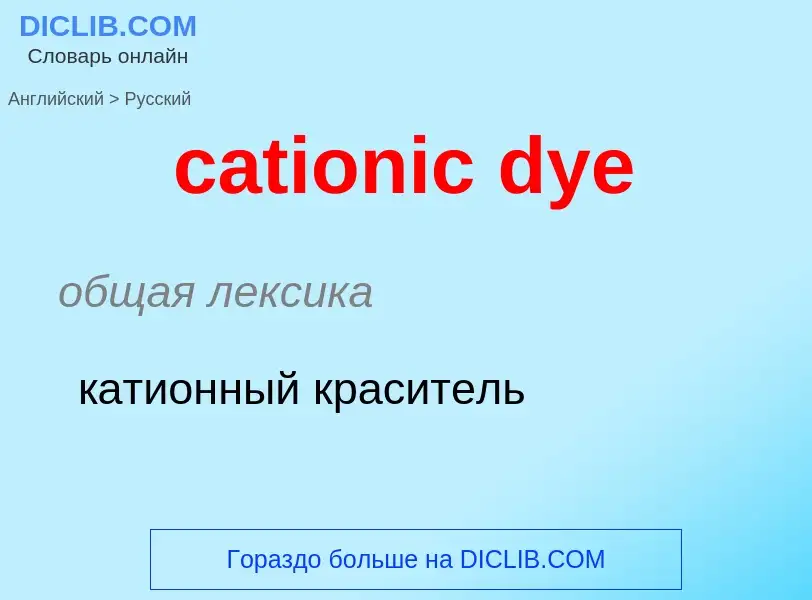Translation and analysis of words by ChatGPT artificial intelligence
On this page you can get a detailed analysis of a word or phrase, produced by the best artificial intelligence technology to date:
- how the word is used
- frequency of use
- it is used more often in oral or written speech
- word translation options
- usage examples (several phrases with translation)
- etymology
cationic dye - translation to russian
общая лексика
катионный краситель
[dai]
общая лексика
краситель
красящее вещество
красить
окрашивать
подкрашивать
краска
красящий
нефтегазовая промышленность
сигнальная цветная присадка к бензину
красить, подкрашивать
Смотрите также
существительное
[dai]
общая лексика
краска
краситель
красящее вещество
окраска
цвет
глагол
общая лексика
(dyed ‹-{dai}d›) красить
окрашивать
окрашиваться
краситься
принимать краску
красить, окрашивать
принимать краску, окрашиваться
синоним
Definition
Wikipedia

Ceragenins, or cationic steroid antimicrobials (CSAs), are synthetically-produced, small-molecule chemical compounds consisting of a sterol backbone with amino acids and other chemical groups attached to them. These compounds have a net positive charge that is electrostatically attracted to the negative-charged cell membranes of certain viruses, fungi and bacteria. CSAs have a high binding affinity for such membranes (including Lipid A) and are able to rapidly disrupt the target membranes leading to rapid cell death. While CSAs have a mechanism of action that is also seen in antimicrobial peptides, which form part of the body's innate immune system, they avoid many of the difficulties associated with their use as medicines.
Ceragenins were invented by Dr. Paul B. Savage of Brigham Young University's Department of Chemistry and Biochemistry. In data previously presented by Dr. Savage and other researchers, CSAs have been shown to have broad spectrum antibacterial activity. Dr. Derya Unutmaz, Associate Professor of Microbiology and Immunology at the Vanderbilt University School of Medicine, tested several CSAs in his laboratory for their ability to kill HIV directly. According to Unutmaz, "We have some preliminary but very exciting results. But we would like to formally show this before making any claims that would cause unwanted hype."
On February 6, 2006, researchers (including Dr. Paul B. Savage) announced that a Ceragenin compound, CSA-54, appears to inactivate HIV. This conclusion seems to still be awaiting peer review.



